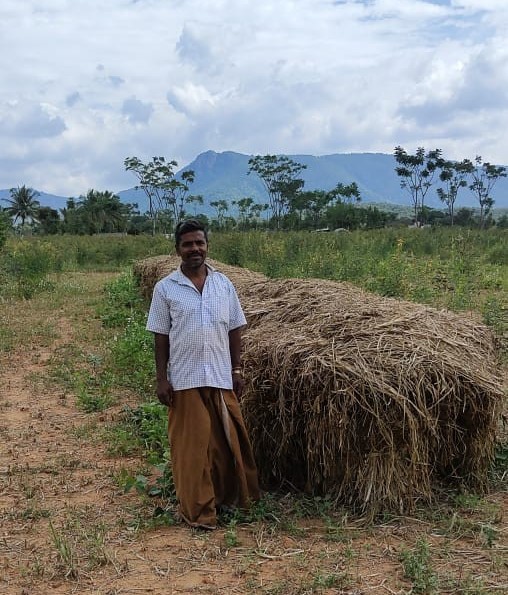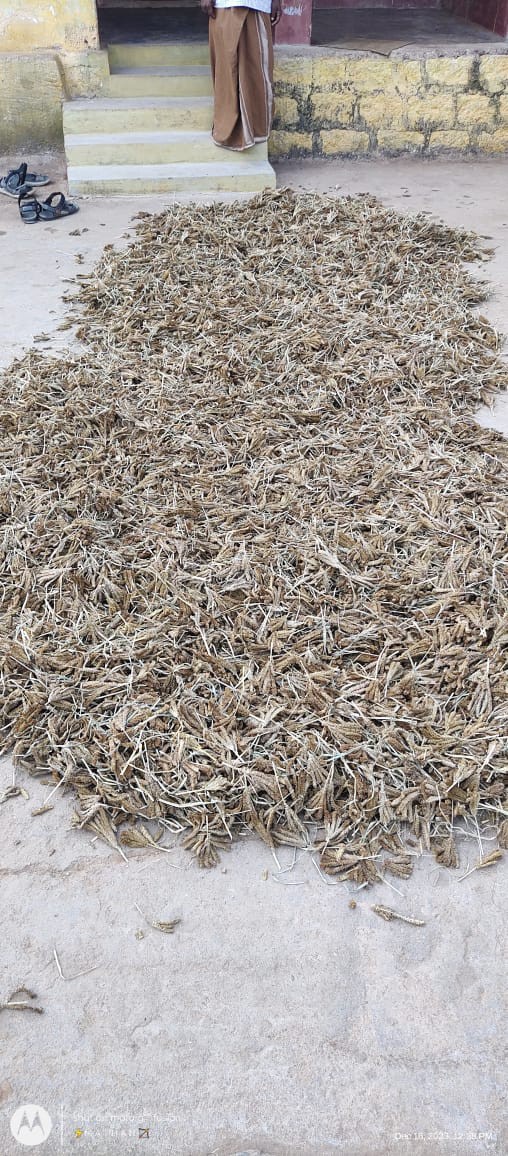
Interview
Insights from Mr.Madeswaran, Experienced Ragi Farmer from Anchetty
We had the opportunity to speak with Mr.Madeswaran, a seasoned Ragi farmer from Shengottai (Anchetty), about his experiences and best practices in Ragi cultivation.
Q : What inspired you to focus on millet farming ?
Madeswaran: “Certainly! Farming Ragi has been a part of my family for generations. It is a resilient crop that thrives in diverse conditions, and its nutritional value makes it essential for many households. When I was young, I didn’t know the benefits and values of Ragi (Kali), which was usually consumed daily. Later, I understood that the consumption of Kali holds immense nutritional value and has been a staple in many communities for generations. It’s fascinating how something that might seem ordinary in childhood can turn out to be highly valued later on, especially when we learn about its benefits and significance.”

Q : Can you share some of your best practices for soil preparation ?
Madeswaran: “In May, when the rains start, we plough the land for the first time with a tractor. In the olden days, we used to plough with cattle, and with experienced cattle, we could plough 1.25 acres in a day. Then we wait for 4-15 days until the second rain comes. After the second rain, we wait for 4-6 days for the unwanted plants (weeds) to germinate, then we start the second plough. Afterwards, we wait for 2-4 days for the next rain. If the rain comes, we start the third plough; otherwise, we use a rake manually or tie it to the cattle to remove all the weeds in the land. The rake goes to the ploughed depth, and finally, we burn the weeds to prevent them from germinating again. During ploughing, we use organic fertilizers like cow dung and goat manure. By the time the June rains come, the field is ready for sowing.”

Q : What are your preferred sowing techniques ?
Madeswaran: “In our village, we prefer the broadcasting method, which is the traditional method followed in the olden days. If others use 10 kg of seeds per acre, we use 12 kg per acre and leave it for 13 days for germination. Afterwards, we do thinning out (removal of unwanted plants to provide better growth for nearby seedlings). If the next rain comes within 2-3 days, the roots remain in the soil, and thinning out will also germinate. During this process, we remove unhealthy seedlings and extra plants that affect the growth of nearby seedlings. The remaining seedlings are planted in free spaces in the field (gap filling). Spacing for the seedlings is irregular.”
Q : How do you manage pests and diseases ?
Madeswaran: “We apply manure and fertilizer after land preparation, ensuring transplanting is done with close spacing. The base of the plant should be covered with soil when the next furrow is drawn. Avoid close planting, practice intercropping with crops other than cereals, and rotate crops to manage pests and diseases. These are some of the control measures we follow in our village.”
Q : Can you describe your approach to fertilization ?
Madeswaran: “We follow organic farming, using cow dung and goat manure during land preparation. This improves the soil’s water-holding capacity, quality, structure, texture, and fertility, promoting healthy crop growth and increasing yield. The organic matter enriches the soil, making it more fertile and sustainable for long-term cultivation. This method not only enhances crop production but also ensures that the produce is free from harmful chemicals, making it healthier for consumption.”

Q : What are your best practices for harvesting and post-harvest handling ?
Madeswaran: “Ragi is ready for harvesting within 3-4 months after sowing. The maturity index is when the spikes turn brown, and the grain is hard and dry. Threshing involves separating the grains from the straw. After threshing, the grains should be cleaned to remove impurities, broken grains, or debris. Store the grains in clean, dry, and well-ventilated containers or bags, and protect them from rats and pests. Finally, clean the grains and dry them in the sun. Proper post-harvest handling is crucial to maintaining the quality and longevity of the grains. Ensuring that the grains are thoroughly dried prevents mold and spoilage, making them safe for long-term storage.”
Q : Any final advice for aspiring millet farmers ?
Madeswaran: “In my view as a farmer, growing rain-fed crops like Ragi teaches us to work with nature and face challenges. July and August are crucial months for Ragi cultivation. The crop requires less water and investment. By consuming Ragi (Kali) daily, I feel more energetic and better than when I consume rice, and it has high medicinal value. Aspiring farmers should understand the importance of patience and adaptability in farming. Embracing traditional practices while being open to new techniques can lead to sustainable and profitable farming. Additionally, staying informed about the latest agricultural developments and networking with other farmers can provide valuable insights and support.”